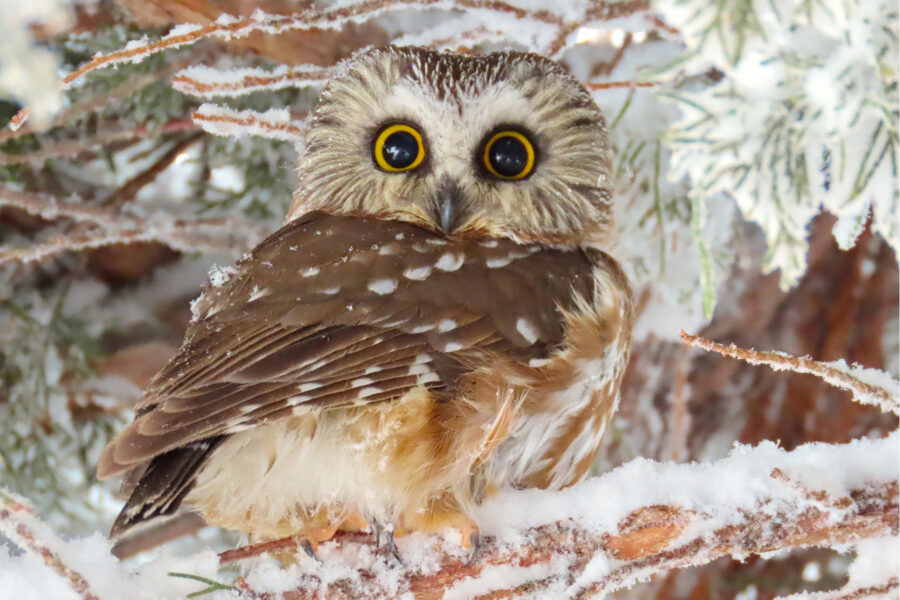Dense forests in the Chesapeake watershed are home to eastern North America’s smallest owl species

Each spring, the distinctive “Too-too-too” call of male saw-whet owls defending their nesting territory can be heard deep in forests throughout the Chesapeake watershed. Adorable as these tiny, big-eyed raptors may be, they usually go unnoticed. Saw-whet owls are about seven to eight inches tall and blend in with tree trunks. It is only during the mating season that they will risk drawing attention to themselves with a seemingly-endless call.
Adapted to thrive
Although saw-whet owls are smaller than most of their raptor relatives, special adaptations help them survive. The raptors have excellent low-light vision so they can hunt by sight at night. The asymmetrical placement of their ears allows them to triangulate sound and pinpoint the specific location and distance of their prey. Saw-whet owl primarily eat rodents but they will also eat insects, small birds, amphibians and crustaceans. However, they aren’t the only owl species with asymmetrical ears: long-eared owls and barn owls have them too. Scientists believe these features allow these owls to hunt in total darkness. Lastly, the feathers on the saw-whet owl’s wingtips have fringes at the ends which help lower the noise made with each flap of their wings.
Searching for cool temperatures and dense forests
Saw-whet owls are a highly migratory species that will inhabit very different sites for nesting and wintering habitat. In the winter, these owls can be found deep in forests and along coastlines, such as those on Maryland’s Eastern Shore. For nesting sites, they prefer coniferous forests near riparian areas (land at the edge of a river or stream). Eastern hemlock groves preferred by saw-whet owls were once plentiful in the Chesapeake region but the hemlock woolly adelgid has destroyed many of those forests. The owls’ preference for cool temperatures and dense forests now leads them to nest in New York, Pennsylvania and parts of West Virginia and western Maryland. Researchers think climate change will have an impact on saw-whet owls but they are still collecting data to see exactly how they will react. Logging and development are the immediate threats that are disrupting saw-whet owl habitat.
Monitoring an elusive species
In 1994, Maryland Department of Natural Resources ecologist Dave Brinker started Project Owlnet to monitor the secretive saw-whet owl. During their annual fall migration, researchers project a male saw-whet owl call to attract females and potential male challengers. The owls are caught in a mist net, which is specially designed to catch raptors without harming them. Researchers record the approximate age, gender, weight and size of each owl before it is banded and released. Previously, it was believed that saw-whet owls were rare, but they now know that their population rises and falls, most likely in correlation with the population of their prey. Monitoring efforts show that saw-whet owl populations currently appear stable, but it will only stay that way if forests and riparian areas are protected in all of their migratory regions.
Visit our field guide to learn more about critters of the Chesapeake Bay watershed.

Comments
There are no comments.
Thank you!
Your comment has been received. Before it can be published, the comment will be reviewed by our team to ensure it adheres with our rules of engagement.
Back to recent stories